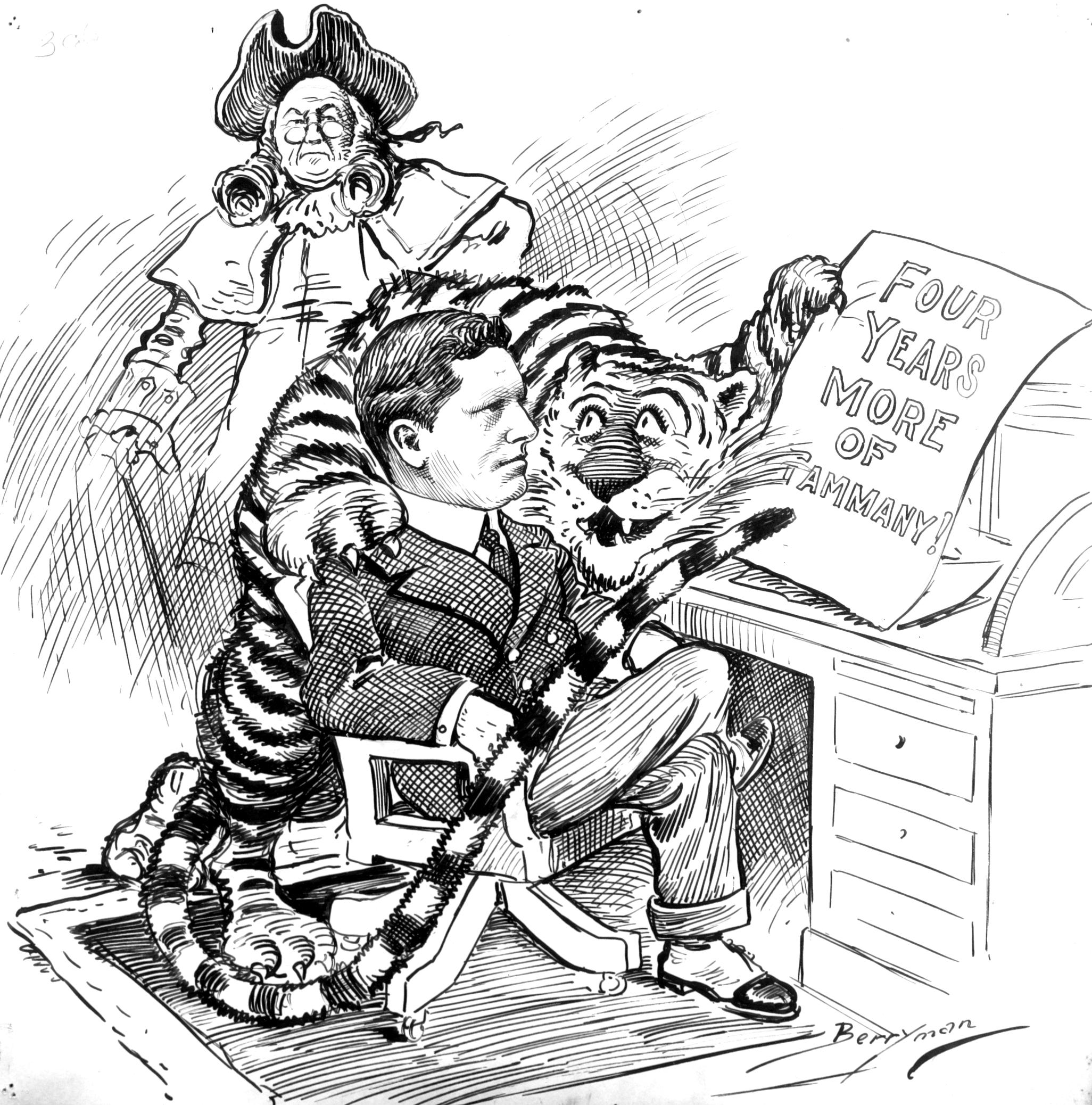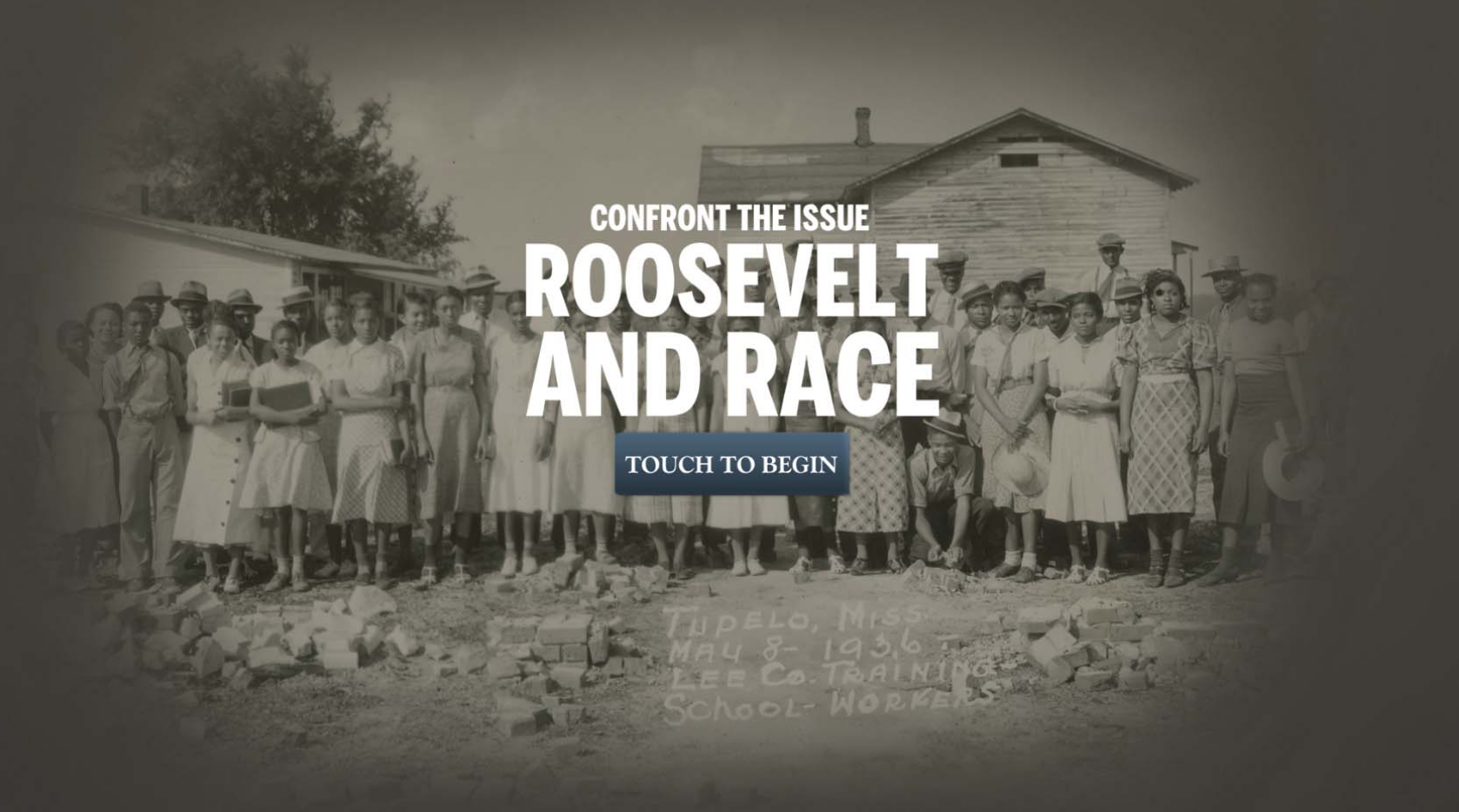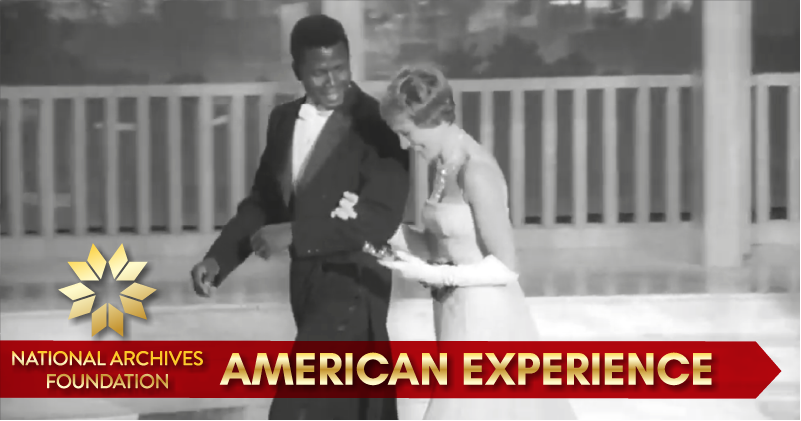Archives Experience Newsletter - February 23, 2021
Lights! Camera! Action!
It’s that time of year again: award show season is upon us, and the National Archives has its fair share of intersections with award-winning material. Countless documentaries have been based on records or subjects found in the National Archives. Even contemporary feature film studios often consult the Archives to improve the accuracy of scripts or visuals. During his interview at the National Archives Foundation’s 2017 Records of Achievement Award Ceremony, Tom Hanks said about the script writers for Apollo 13, “Why make this stuff up? It’s already written down, go to the National Archives.”
Conversation with Hanks and Burns
2017 Records of Achievement Award Ceremony
(Starts at 9 minutes 35 seconds
– full program runs 34 minutes 10 seconds)
Source: NARA YouTube Channel
Fast-forward to this year, and we have our fingers crossed for Self Made, a Netflix miniseries about the life of Madam C.J. Walker. This miniseries was based on the biography “On Her Own Ground: The Life and Times of Madam C.J. Walker” by A’Lelia Bundles, Madam C.J. Walker’s great-great-granddaughter and a National Archives Foundation Board member. I was lucky enough to sit down (virtually) with her last May as she took us behind-the-scenes in the making of Self Made.
I could talk about a well-known shark that was named after one of the Foundation’s current Board members, but I’ll save that for another time. American history abounds in the holdings of the National Archives and on the screen. Warm up your favorite recliner and enjoy the show!
🍿
Patrick Madden
Executive Director
National Archives Foundation
Freedom Summer Inspiring Young Voters Today
P.S. You still have time to register for tomorrow’s program, “Freedom Summer Inspiring Young Voters Today,” a program about how a civil rights murder in 1964 has inspired a national movement of young people to vote and engage in civic life today.
And the Award Goes to…

Bringing Battle to the Home Front: With the Marines at Tarawa
Source: NARA’s The Unwritten Record
Anyone who has ever sat through an entire presentation of the Oscars knows that Best Picture, Best Director, Best Actor and Best Actress are not the only awards that are handed out. In 1945, the documentary film With the Marines at Tarawa, produced by the United States government, won the Academy Award for Best Documentary. The document was assembled from footage shot by cameramen in the field during and after a major battle fought in the South Pacific over a period of four days in 1943, during which the U.S. Marines stormed the island of Tarawa. When the battle ended, more than 1,000 Marines were dead, and another 2,000 were wounded. Virtually all of the 4,700 Japanese soldiers and Korean forced laborers who had occupied the island had been killed or wounded.
I’ve Got a Great Idea for a Picture
 This untitled illustration by cartoonist Clifford Berryman, which appeared in the Washington Post on November 8, 1905, depicts William Randolph Hearst, who ran for mayor of New York in the 1905 election, sitting at his desk while being taunted by the Tammany Tiger as election results came in showing powerful Tammany-backed candidate George B. McClellan Jr. to be the winner.
This untitled illustration by cartoonist Clifford Berryman, which appeared in the Washington Post on November 8, 1905, depicts William Randolph Hearst, who ran for mayor of New York in the 1905 election, sitting at his desk while being taunted by the Tammany Tiger as election results came in showing powerful Tammany-backed candidate George B. McClellan Jr. to be the winner.The movie Mank, nominated for a 2021 Golden Globe for Best Picture, deals with the thorny question of who should have been credited with writing Citizen Kane, widely considered the greatest American movie ever made and the film that definitively launched Orson Welles’ career. Welles and Herman J. Mankiewicz, a screenwriter who had come out from New York to work for Paramount Pictures in the late 1920s, famously and publicly wrangled over who should receive credit for writing the screenplay. Although Welles repeatedly stated that he had written the entire film as well as directing and acting in it, Mankiewicz insisted on – and ultimately received – a co-writing credit for it.
Another burning question about the film was whether the character Charles Foster Kane was entirely fictional or was based on an actual person. Apparently, the depiction paralleled the life of media magnate William Randolph Hearst closely enough that Hearst attempted to suppress the film, refusing to run advertisements for it in any of his newspapers and accusing Welles of being a communist.

National Archives Identifier: 195993046
Hearst wasn’t the only one who believed Welles had based Citizen Kane on his life. In 1948, author Ferdinand Lundberg sued Welles, Mankiewicz and RKO, the studio that produced the film, alleging that they had plagiarised his book “Imperial Hearst: A Social Biography” when they wrote Citizen Kane. The National Archives has in its holdings a copy of Orson Welles’ deposition for the case, which was taken in Casablanca in 1949, where the actor was filming Othello. In the deposition, Welles denied that the film was based on the life of William Randolph Hearst and stated that he had not read “Imperial Hearst.”
The True Story of a Jazz Icon

This year, actress Andra Day has been nominated for a Golden Globe for Best Actress in a Drama for her portrayal of legendary jazz singer Billie Holiday in the upcoming movie, The United States vs. Billie Holiday. Born in Philadelphia in 1915, Eleanora Fagan took her stage name when she began singing in Harlem as a teenager. One of America’s most important and influential jazz singers, Holiday worked with the likes of Count Basie, Teddy Wilson, and Artie Shaw.
Billie Holiday’s most recognized song is “Strange Fruit,” a song written by a Jewish school teacher from the Bronx, Abel Meeropol. Holiday first performed “Strange Fruit” in 1939 and recorded it that same year. The release of the song is considered a turning point in the American Civil Rights movement, as it drew attention to the shameful practice of torturing, burning and lynching Black Americans in the South.

Source: Roosevelt Library’s Forward with Roosevelt blog
The subject was extremely controversial. Based on “Chasing the Scream: The First and Last Days of the War on Drugs” by Johann Hari and directed and produced by Lee Daniels, The United States vs. Billie Holiday posits that federal law enforcement officers felt “Strange Fruit” was inciting unrest in the South and thus set out to discredit Holiday by using her addiction to heroin against her.
While Holiday brought awareness of the lynching crisis in America through her recording of “Strange Fruit,” First Lady Eleanor Roosevelt was battling to end lynching from Washington, D.C. She made the passage of anti-lynching legislation a keystone of her efforts to improve Black Americans’ lives. In 1935 and again in 1937, she lobbied legislators and her husband unceasingly, imploring them to stand up to Southern legislators and put a stop to these inhumane murders.

President Roosevelt, however, feared for his legislative agenda and therefore refused to support the legislation. The defeat of the legislation was one of Mrs. Roosevelt’s most bitter disappointments.
Many years later, in December 1945, Mrs. Roosevelt saw a new play titled “Strange Fruit” on Broadway. In response, she wrote,
“We need to understand these circumstances in the North as well as in the South. There are mental and spiritual lynchings as well as physical ones, and few of us in this nation can claim immunity from responsibility for some of the frustrations and injustices which face not only our colored people, but other groups, who for racial, religious or economic reasons, are at a disadvantage and face a constant struggle for justice and equality of opportunity.”

The Franklin D. Roosevelt Presidential Library and Museum, one of the partners of the National Archives, has important holdings that document Eleanor Roosevelt’s campaign to outlaw lynching.
The Academy Award of Protests

National Archives Identifier: 6210766
Violence erupted at the Democratic National Convention in Chicago in August 1968, when anti-Vietnam War protesters took to the streets to demonstrate against the war. In response, the Chicago Police Department attacked not only demonstrators, but also photographers, reporters and bystanders. The Golden Globe-nominated film The Trial of the Chicago 7 depicts the trial of Abbie Hoffman, Jerry Rubin, Tom Hayden, Rennie Davis, David Dellinger, Lee Weiner and John Froines on charges of inciting the riots at the 1968 convention.
In 2012, the National Archives in partnership with Historypin created a virtual tour of the events that occurred during the convention. The tour includes maps, documents and historical photographs, some of which are paired with contemporary photographs of the same places to give viewers a sense of how the physical landscape has changed since 1968.
“Then and now” photography projects have been gaining popularity in the past several years. What sort of “then and now” project would you like to do? You can start by finding a photograph of a place or an event and then using an online app to locate a street-view image of the same place. You can learn a lot by comparing an older view of a place with a more contemporary one.
Acting Is Just the Beginning

Miss Myrna Loy, American film star in Paris for the conferences is being shown the Exhibit of Human Rights by Clive Entwistle, 9/1949
National Archives Identifier: 74229137
Source: NARA’s Prologue blog
Myrna Loy and Hedy Lamarr were contemporaries who worked in Hollywood during roughly the same era. Loy was a girl from Helena, Montana, who made good in Hollywood in the 1930s. Starting off with small parts in silent movies, she won rave reviews for her work as Nora Charles opposite actor William Powell, who played Nick Charles in the immensely popular Thin Man series of movies.

Myrna Loy, Her World Beyond Hollywood
Part I 1905-1949
Source: NARA’s The Text Message blog
But outside the studio, Loy was a living, breathing embodiment of the concept of giving back. First, she was active in politics, supporting Franklin D. Roosevelt’s campaigns for president. In the early days of World War II, before the United States entered the conflict, she raised money for the relief for beleaguered European countries. After Pearl Harbor was bombed, Loy worked tirelessly to raise funds and improve the morale of U.S. troops. In the middle of the war, she worked in an unpaid position for the American Red Cross in New York City. After the war ended, she was an outspoken opponent of the House Un-American Activities Committee, which was investigating communism in the United States, especially among people working in entertainment in general and motion pictures in particular.

National Archives Identifier: 167820368
Source: NARA’s Prologue blog
Loy’s longest-lasting and most enduring contribution to philanthropy may have been her work for the cause of the United Nations. For years, she worked for the United Nations Educational, Scientific and Cultural Organization (UNESCO) and the American Association for the United Nations, an organization that supported the UN’s mission in the United States. Despite her long and distinguished acting career, Myrna Loy never won an Oscar for any of her performances. In 1991, the Academy finally gave her an award in recognition of her lifetime achievements both on the screen and off it.
Actress Hedy Lamarr was a bona fide movie star. Born in Vienna, Austria-Hungary in 1915, she made several movies in Europe before fleeing to the United States in 1937, just before World War II began there. She was soon under contract with Metro-Goldwyn-Mayer studio, for which she made a series of box-office hits, beginning with Algiers in 1938. Her star turn as Delilah in Cecil B. DeMille’s Samson and Delilah (1949) was her biggest hit.
But Hedy Lamarr was not just a talented actress, but also a talented inventor. In the early 1940s, she worked with composer George Antheil to invent a system designed to make the U.S. Navy’s radio-controlled torpedoes much more effective. She and Antheil applied for a patent for the invention in 1942. The immediate reception for their invention was lukewarm at best, but it became the basis for the development of Bluetooth and Wi-Fi.











